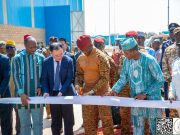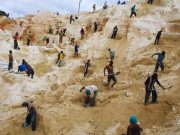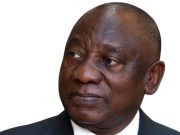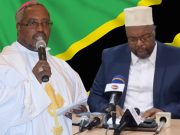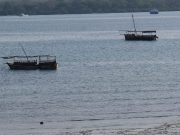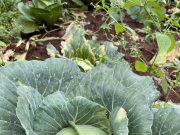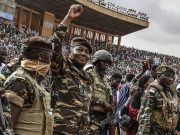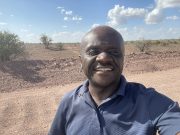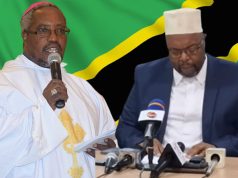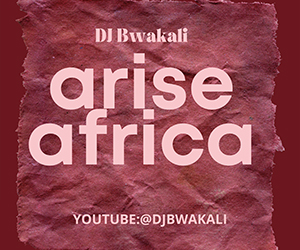The story does not begin with a border dispute, a separatist march or a government crisis. It begins with a private jet descending quietly over the hills of the Eastern Cape, a stretch of South Africa so neglected that many villages still beg for working clinics and reliable roads. On that day, the red dirt runway had been freshly extended, resurfaced and polished for royalty. Not South African royalty. Not African royalty. But the president of the United Arab Emirates, Sheikh Mohamed bin Zayed Al Nahyan.
He did not land at a national airport. He landed at his own game farm, a private estate in one of South Africa’s poorest provinces, complete with a runway upgraded using millions of rands that his government had donated to a provincial project. The arrival looked glamorous and almost harmless. Yet beneath the surface was a quieter and more unsettling question. When a foreign head of state can touch down on what feels like a private enclave inside your borders, who truly commands the territory?
That question becomes even sharper as you drive westward into the wind-beaten plains of the Eastern Cape, where giant turbines now dominate the horizon. These are part of multimillion-dollar wind farms co-owned by one of the most powerful sovereign wealth funds on earth. Qatar’s Investment Authority now controls a substantial share of the energy infrastructure rising over the province. The turbines are technically South African. They operate under South African regulation. The land beneath them belongs to South African communities. Yet the money, the technology, the contracts and the long-term leverage sit in foreign hands. Energy is the bloodstream of a modern nation. When a foreign government owns a major valve in that system, sovereignty begins to feel conditional.
Then the road bends toward the mountains and orchards of the Western Cape, and the landscape changes again. Here the fingerprints belong to Israelis. They appear not on flags or embassies but in drip irrigation lines running through vineyards, in orchards whose seed varieties, business models and export routes trace back to the Middle East, and in the gleaming packhouses built with Israeli capital in partnership with South African institutions. For decades this region has grown dependent on Israeli water technology, genetics, and agricultural supply chains. There is no coup and no conspiracy. There is only the slow accumulation of influence as a foreign ecosystem embeds itself inside a vital South African industry.
Still nothing destabilises the Cape as much as the fourth force that now pulses beneath the surface. That force is secession.
Cape Independence is no longer a fringe dream. It is a movement with a name, an online presence and a growing psychological hold on a portion of the province. Its followers argue that the Western Cape is politically and culturally distinct, more efficient than the national government, and increasingly burdened by policies that emanate from Pretoria. At first the idea sounded absurd. It felt like the frustration of homeowners and suburban voters who wanted cleaner streets and faster service delivery. But polling tells a different story. More than a third of the Western Cape’s residents say they would support independence or at least want a referendum. The number is not a majority, yet it is large enough to signal a deep and dangerous fracture.
When you place these pieces together the pattern becomes harder to ignore. Gulf monarchs landing on private runways. Foreign sovereign wealth funds buying into the wind. Israeli capital shaping orchards and food chains. A province flirting with political divorce. None of these occurrences might threaten sovereignty on their own, but together they form a shadow that stretches across the Cape.
Foreign ownership of land across the country is still small. Most farms and agricultural properties remain in local hands. Yet power no longer sits in raw acreage. It sits in strategic nodes: in the energy grid, in water technology, in agricultural processing, in logistics, and in infrastructure. That is where influence is born. That is where leverage takes root. That is where dependency grows stronger with each passing year.
The Eastern Cape’s runway was never just a strip of tarmac. It was a symbol of a province so neglected by its own government that it welcomed foreign donors with a level of urgency it does not show to its own people. The wind farms are not simply green energy projects. They are co-managed by another state that now has a stake in the success of South Africa’s electricity supply. The packhouses in the Western Cape show how a foreign agricultural philosophy has become central to local production.
Nothing in this landscape is illegal. Nothing formally violates South Africa’s sovereignty. The constitution still applies. The borders remain intact. The courts still set the rules. On paper, everything is proper and orderly.
The trouble is that sovereignty is not sustained by paper. It is sustained by a shared national belief that the forces shaping your future are primarily internal rather than external.
In the Cape, that belief is starting to waver.
The most alarming part is that foreign influence is taking root in the same territory where secessionist dreams already thrive. Many foreign investors prefer the Western Cape because it is stable, predictable and better governed than much of the country. They see a place that feels separate even if the constitution says it is not. Secessionists, in turn, point to these investments as proof that the Western Cape can survive on its own. That overlap creates a psychological corridor where internal discontent and external influence begin to reinforce each other.
No one is claiming that foreign powers are plotting to break South Africa apart. The truth is more subtle and far more haunting. Countries rarely lose sovereignty when armies invade. They lose it when they are too divided or too distracted to notice when influence begins pulling different parts of the state in different directions.
The Cape is not lost. Yet it is drifting. And South Africa, exhausted by corruption, inequality, unemployment and political paralysis, may not be gripping the wheel tightly enough to steer it back.
If sovereignty is to remain intact, the country must insist that its land, energy, water, food, infrastructure and political destiny are shaped by all its people. Not by foreign governments acting through capital and technology. Not by wealthy provinces imagining themselves as separate nations.
The danger is not that the Cape will declare independence tomorrow. The danger is that South Africans will one day wake up and realise that the forces shaping their future no longer answer to them.
djbwakali@gmail.com






